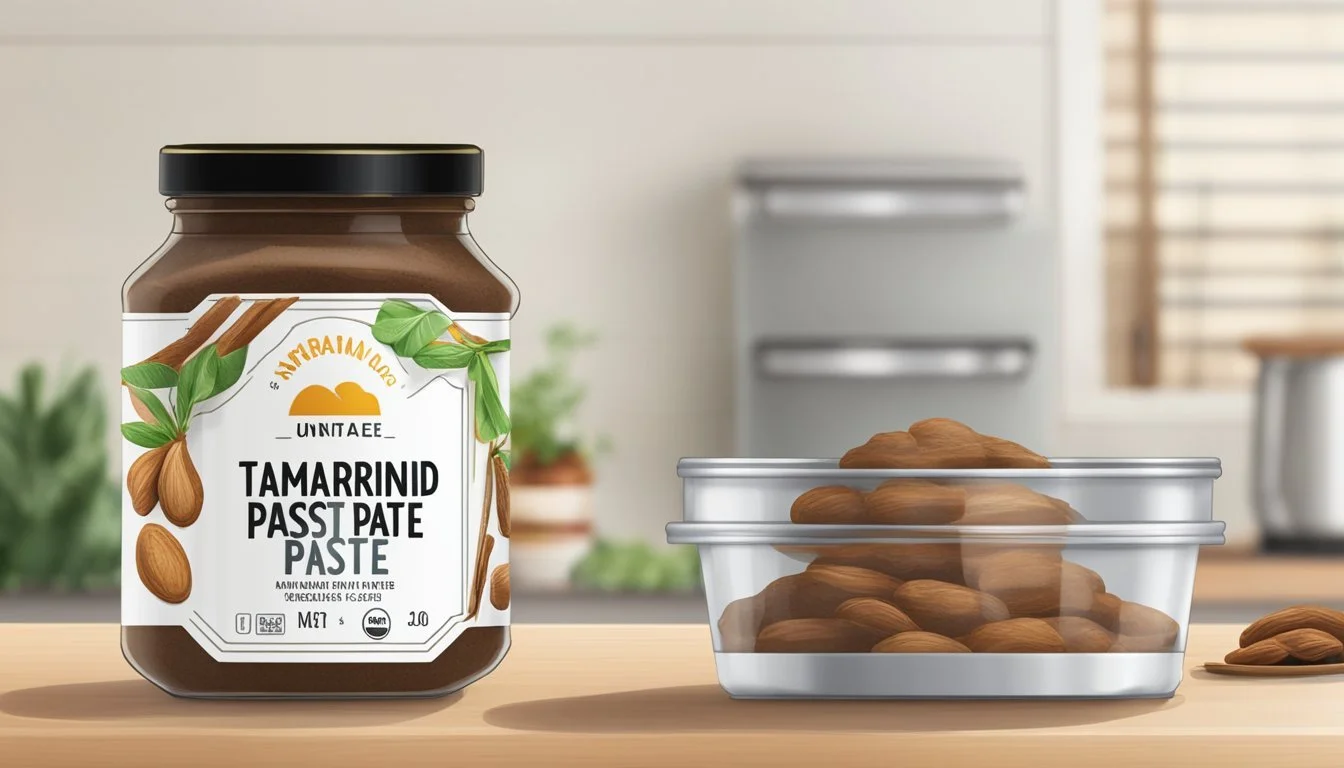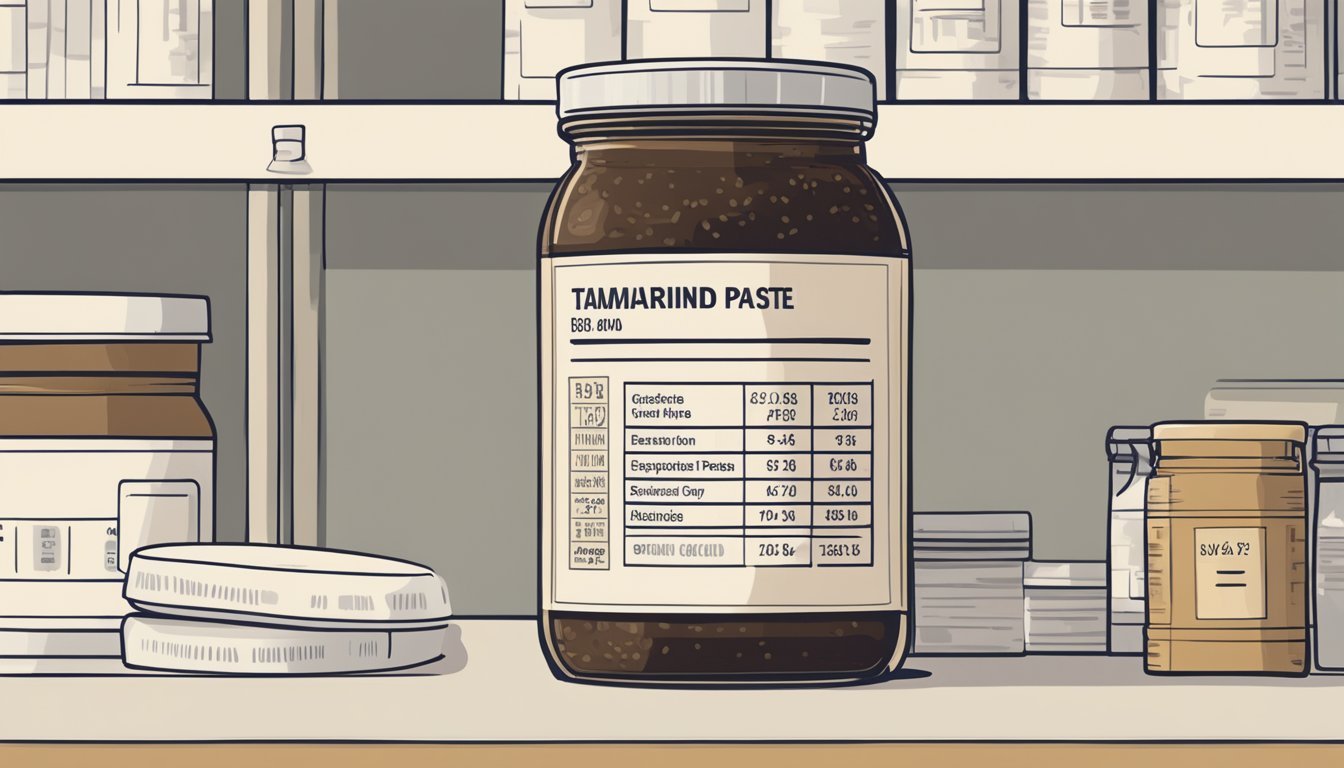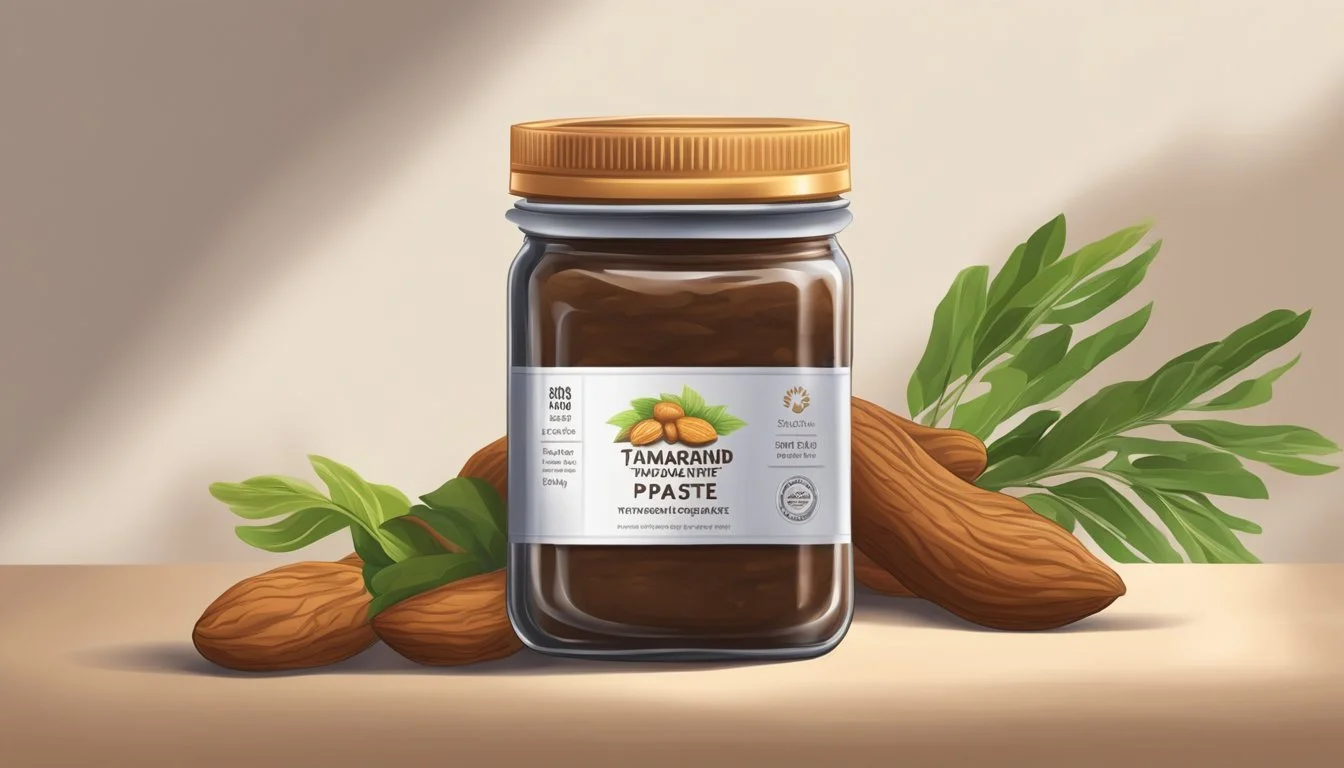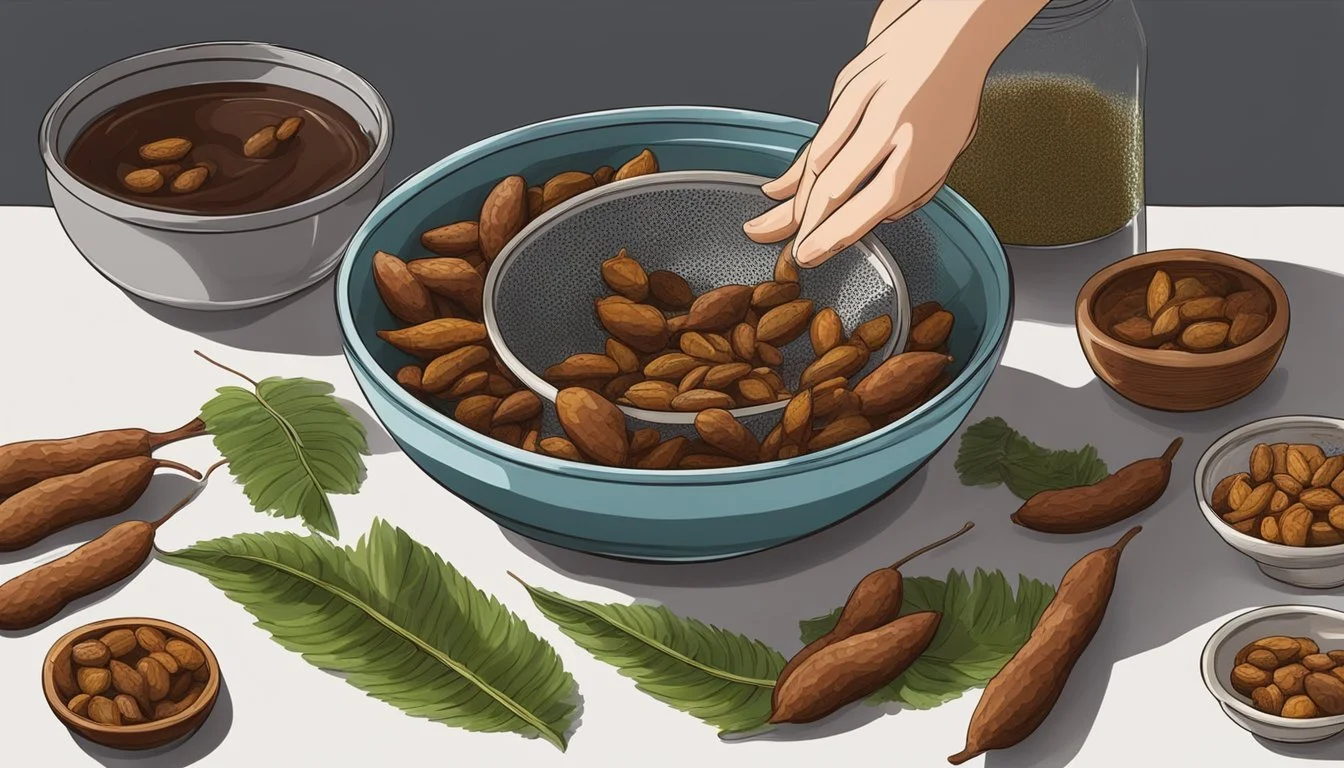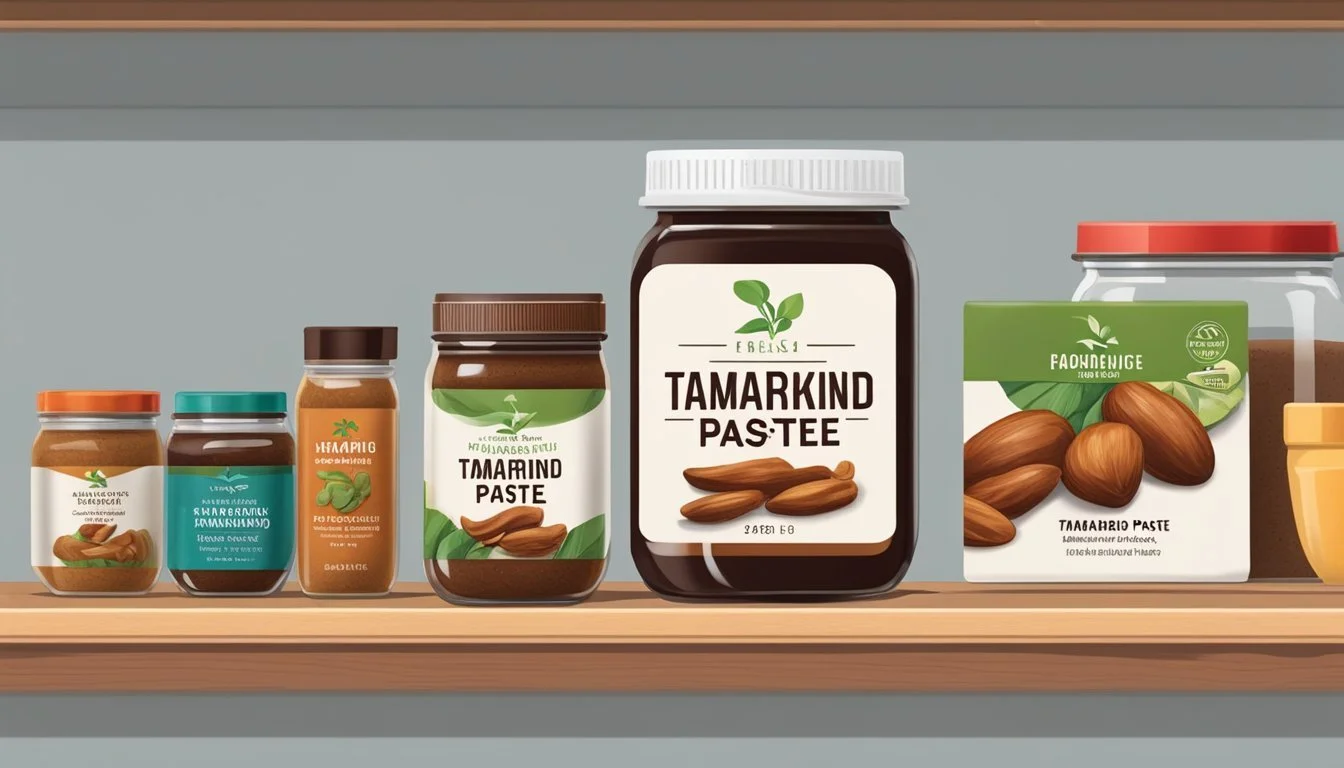How Long Does Tamarind Paste Last?
Shelf Life and Storage Tips
Preserving the lifespan of tamarind paste(how long does tamarind paste last?) is a matter of proper storage. Tamarind paste, a tangy and sour condiment commonly used in Asian and Middle Eastern cuisines, can endure a considerable amount of time when stored correctly. The shelf life of unopened tamarind paste can range from three to five years, provided it is kept in a cool, dark place such as a pantry.
Once opened, the paste's longevity depends on its storage environment. Refrigeration is recommended for maintaining its quality. Stored in an airtight container within the fridge, tamarind paste can last up to six months while retaining its flavor and freshness. To further extend its shelf life, freezing is an excellent option, with the paste remaining usable well beyond its expiration date when stored in a freezer-safe container or bag.
It's important to note that the paste should be kept away from moisture, as this can lead to spoilage. Signs that tamarind paste has gone bad include a sour smell that is off-putting and a noticeable change in texture or color. Always inspect the paste before use to ensure it has remained fresh and safe for consumption.
What Is Tamarind Paste?
Tamarind paste is a thick, concentrated form of tamarind fruit, known for its tart and tangy flavor. It is often used in cooking to infuse dishes with its distinctive sourness, often balanced out with sweetness.
Origin and Uses
The tamarind tree originates from Africa, and its fruit is extensively used across various cuisines, notably in Indian, Middle Eastern, and Mexican dishes. Tamarind paste is made by removing the flesh from the tamarind pods and processing it, often with water to achieve the desired consistency.
Common Uses:
Adding a sour note to sauces, marinades, and chutneys
Serving as a base ingredient in worcestershire sauce (how long does worcestershire sauce last?)
Flavoring for beverages like agua fresca de tamarindo in Mexican cuisine
Used in desserts to contribute a unique flavor contrast
Nutritional Profile
Tamarind is valued not only for its flavor but also for its nutritional benefits. The paste contains significant amounts of fiber and antioxidants, along with various vitamins that contribute to its health-promoting properties.
Key Nutrients:
Dietary Fiber: Important for digestive health
Antioxidants: Helps protect the body from oxidative stress
Vitamins: Includes Vitamin C and B-vitamins for overall wellness
Tamarind paste can be stored for several months or even years when kept in an appropriate environment, preferably a cool and dry place. Its long shelf life makes it a convenient ingredient to keep on hand for a variety of recipes.
Storage Guidelines
Proper storage of tamarind paste is crucial to maintain its freshness and quality. Adhering to the right conditions can greatly extend its shelf life.
Proper Storage Conditions
Storing tamarind paste correctly involves keeping it in an airtight container to protect against moisture and contaminants. The ideal storage location is a cool, dry place away from direct sunlight. Glass jars are preferable for maintaining the paste's consistency and preventing the absorption of other flavors.
Freezing for Extended Freshness
For long-term storage, one can freeze tamarind paste. To do so effectively, divide the paste into usable portions, such as using ice cube trays. Once frozen, transfer the cubes to a resealable food safe bag and keep them in the freezer. This method helps retain the quality over several months and provides convenience for future use.
Refrigeration vs. Room Temperature
Tamarind paste may be stored at room temperature or refrigerated. While room temperature is adequate for short-term storage, refrigeration extends its lifespan—typically lasting up to 4-6 weeks. Always ensure the refrigerator is set at the proper temperature, and the paste remains in a sealed container.
Signs of Spoilage
A decline in tamarind paste's quality can be identified by a few signs:
Mold: White or green fuzzy spots indicate spoilage.
Discoloration: Any significant change from its original color.
Off smell: An unusual or sour smell different from its natural tangy aroma.
If any of these signs are present, the tamarind paste should not be used and properly disposed of to avoid any food-related illness.
Maximizing Tamarind Paste Longevity
To ensure the longest shelf life for tamarind paste, one must focus on proper storage techniques. These methods prevent texture alteration and spoilage, ensuring that the paste retains its quality whether store-bought or homemade.
Airtight Containers and Their Impact
Storing tamarind paste in airtight containers is pivotal. It prevents exposure to air, which can lead to oxidation and loss of flavor. A well-sealed container, whether glass or plastic, can help maintain the paste's quality and extend its shelf life.
Keeping Tamarind Paste Dry
Moisture is a significant enemy of tamarind paste, potentially leading to spoilage. The paste should be kept in a cool and dry place, away from humidity. For additional protection, ensure the area of storage does not experience extreme temperature fluctuations.
Best Practices for Homemade Paste
When preparing homemade tamarind paste:
Sift through a sieve to ensure a smooth texture.
Carefully stir and dry any excess moisture before storing.
Always use clean tools to prevent contamination.
By diligently applying these storage techniques, the longevity of tamarind paste can be maximized, whether sourced from a grocery store or made at home.
Culinary Applications of Tamarind Paste
Tamarind paste is a versatile ingredient recognized for its distinct tart flavor and ability to enhance dishes across various cuisines. It contributes to both the taste profile and texture of recipes.
Enhancing Taste and Texture
Tamarind paste is known for its sour, citrusy flavor that adds a depth of taste to many dishes. The thickness and consistency of the paste make it ideal for creating rich sauces and marinades. When simmered, it imparts a tangy sour taste that can counteract the richness of sugar and molasses, often used as a sweetener in desserts and candies.
Tamarind in Different Cuisines
From the tamarind chutneys prevalent in India to the pad thai sauce of Thai cuisine, tamarind paste is a global kitchen staple. It finds its place in Mexican cuisine in beverages like agua fresca de tamarindo and as an ingredient in Worcestershire sauce (how long does worcestershire sauce last?), showcasing its wide-ranging application.
Cuisine Common Tamarind Application Indian Chutneys, Beverages Thai Pad Thai Sauce Mexican Aguas Frescas, Sauces International Worcestershire Sauce
Recipe Creation and Modification
Chefs use tamarind paste to create complex flavor profiles in recipes, often adjusting acidity or sweetness to achieve balance. The ability to modify store-bought sauces or dressings by adding tamarind paste allows for personalization while cooking, transforming simple dishes into unique culinary experiences.
Alternative Uses in Cooking
Beyond its traditional uses, tamarind paste can also be incorporated into desserts to add a nuanced tartness. Its high pectin content helps thicken jams and jellies, and its acidic properties make it suitable for boiling into syrups that can be used as a glaze or in crafting beverages.
Purchasing and Preparing Tamarind Paste
When exploring the world of tamarind paste, consumers have two primary options: preparing a homemade version or purchasing it from a store. The preparation method and where it is bought significantly influence the paste's freshness and shelf life.
Homemade vs. Store-Bought
Homemade tamarind paste typically has a longer shelf life than store-bought versions due to the absence of preservatives. The homemade variety allows full control over the ingredients and can be free from additives. However, store-bought tamarind paste is readily available and convenient, saving time for those not wishing to make their own.
Making Tamarind Paste at Home
To make homemade tamarind paste, one needs to start with tamarind pods or compressed blocks of tamarind. The outer shell of the pods must be removed to reveal the sticky, date-like tamarind fruit. If using a block of tamarind, it should be broken into small pieces. The seeds are then separated from the pulp, which is simmered with water to soften.
Break compressed tamarind into small pieces.
Remove seeds from the pulp.
Simmer with boiling water until softened.
Press the mixture through a sieve to create a smooth paste.
Selection Tips at Grocery Stores
When looking for tamarind paste at the grocery store or international market, especially Asian grocery stores, opt for products with minimal ingredients to ensure freshness and a pronounced sour flavor characteristic of tamarind. Examine the packaging for any signs of mold, and always check the expiration dates to ensure longevity.
Inspect: Check for mold and damage.
Expiry Date: Always check the expiration date for maximum freshness.
Ingredients: Look for pure tamarind without additives for a robust flavor.
Understanding Tamarind Paste Shelf Life
Tamarind paste's shelf life is influenced by various factors, including storage conditions and the presence of preservatives. Recognizing these elements can help maintain the flavor and quality of the product.
Factors Affecting Shelf Life
Several key factors influence the longevity of tamarind paste:
Storage Temperature: Tamarind paste lasts longer when stored in the refrigerator or freezer, with the freezer extending its shelf life indefinitely. At room temperature, it is susceptible to faster degradation.
Exposure to Air: Storing tamarind paste in an airtight container helps to maintain its texture and flavor by preventing oxidation.
Consistency: The denser the paste, the less likely it is to harbor moisture and contaminants that can lead to spoilage.
Expiration and Best By Dates
It's crucial to note the expiration date indicated by the grocery store:
Tamarind paste may last up to two years if unopened and stored properly.
Once opened, its freshness can decline. It’s generally safe to consume for up to a month in the cabinet or three months in the refrigerator.
The Role of Preservatives
Preservatives such as vinegar, citric acid, or tartaric acid are sometimes added to enhance shelf life:
These substances help maintain the tart flavor and consistent texture of the paste.
Natural preservatives help prevent mold and discoloration, preserving the freshness and shelf life.
Practical Tips for Monitoring Freshness
To assess the freshness of tamarind paste, pay attention to:
Smell: An off or sour odor can indicate spoilage.
Texture: If the consistency has changed to either too watery or too thick, it may be a sign that the paste is no longer fresh.
Discoloration: Any form of discoloration can be a tell-tale sign of spoiling.
Mold: The presence of mold means the paste has gone bad and should not be consumed.
Health Considerations and Benefits
Tamarind paste, originating from India, has been acknowledged not only for its culinary uses but also its health benefits. The product is rich in fiber, antioxidants, and vitamins integral to a well-balanced diet.
Nutritional Advantages
Tamarind paste is a nutritional powerhouse, packed with essential components that benefit one's health. Here's a breakdown of its major nutritional constituents:
Fiber: It is rich in dietary fiber which aids in digestion and can help prevent constipation.
Antioxidants: Contains antioxidants which combat free radicals in the body, potentially reducing the risk of chronic diseases.
Vitamins: It offers a spectrum of vitamins, including a significant amount of vitamin C, as well as B vitamins which are crucial for energy metabolism.
By incorporating tamarind paste into their diet, individuals can leverage these nutritional benefits to support overall health and well-being.

